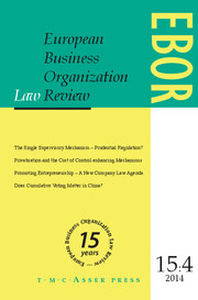Article contents
The Harmonisation of Hungarian Company Law – A Pendular Process
Published online by Cambridge University Press: 17 January 2005
Extract
Before joining the European Union on 1 May 2004, Hungary entered into an Association Agreement with the European Community and its Member States on 16 December 1991. One of the most important aims of this Agreement (also known as the Europe Agreement) was to establish a free trade area between the parties to the Agreement, covering all trade between them, and to make progress towards realising the other economic freedoms on which the Community is based. As a tool for achieving these aims, Chapter III of the Europe Agreement prescribed the approximation of legal regulations. Of course, this approximation did not imply a two-way movement, but the one-sided approach of Hungarian law to the legal rules of the Community. The parties to the Agreement held that one of the basic conditions of Hungary's economic integration was to approximate the country's present and future laws to the laws of the Community. Hungary therefore undertook that as far as possible Hungarian legislation would be brought into accordance with the laws of the Community. The Europe Agreement indicated the main areas for the approximation of laws. Under Article 68 of the Agreement, approximation was also meant to take place in the area of company law.
- Type
- Articles
- Information
- European Business Organization Law Review (EBOR) , Volume 5 , Issue 4 , December 2004 , pp. 705 - 727
- Copyright
- © T.M.C. Asser Press 2004
- 2
- Cited by


